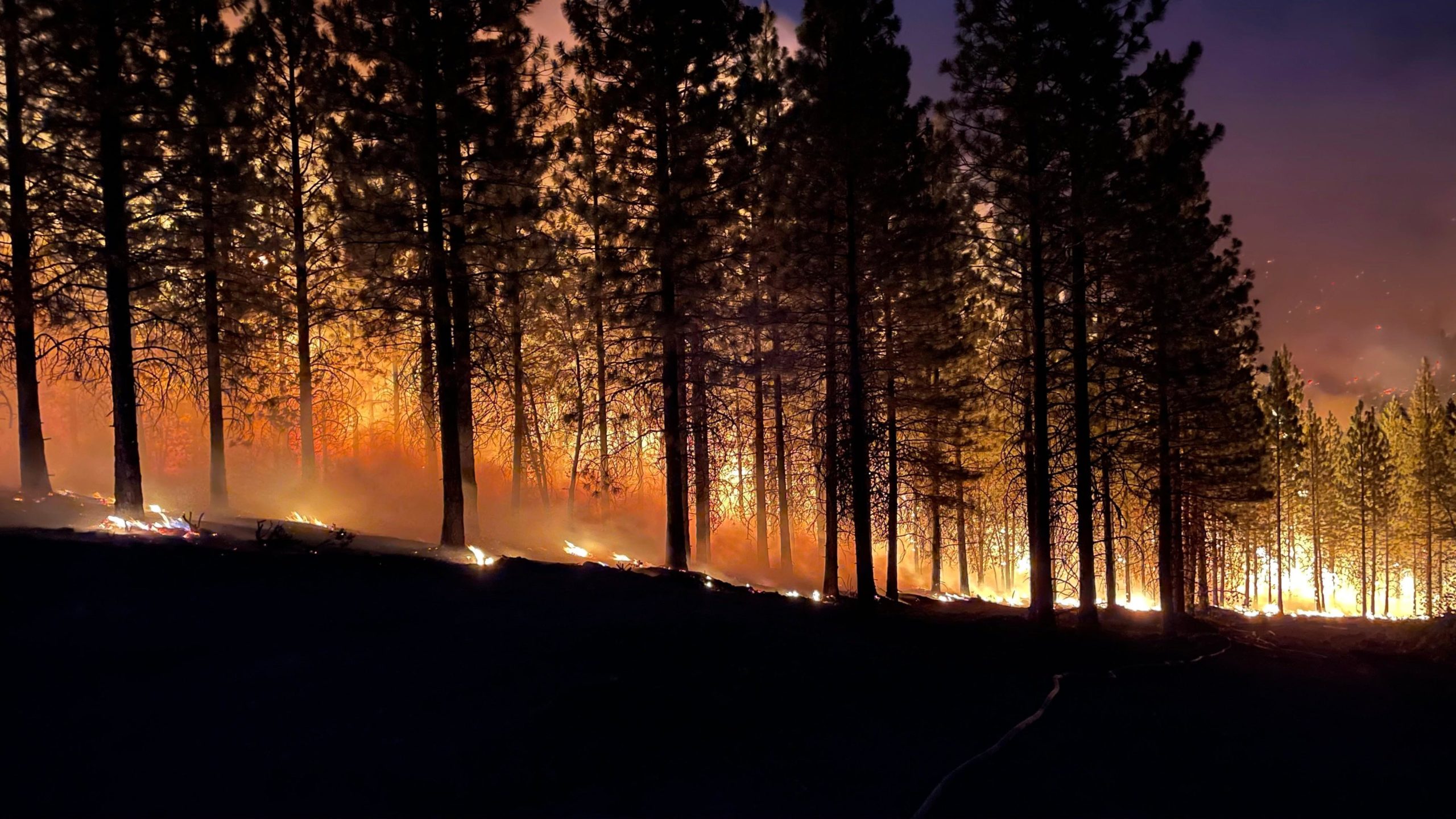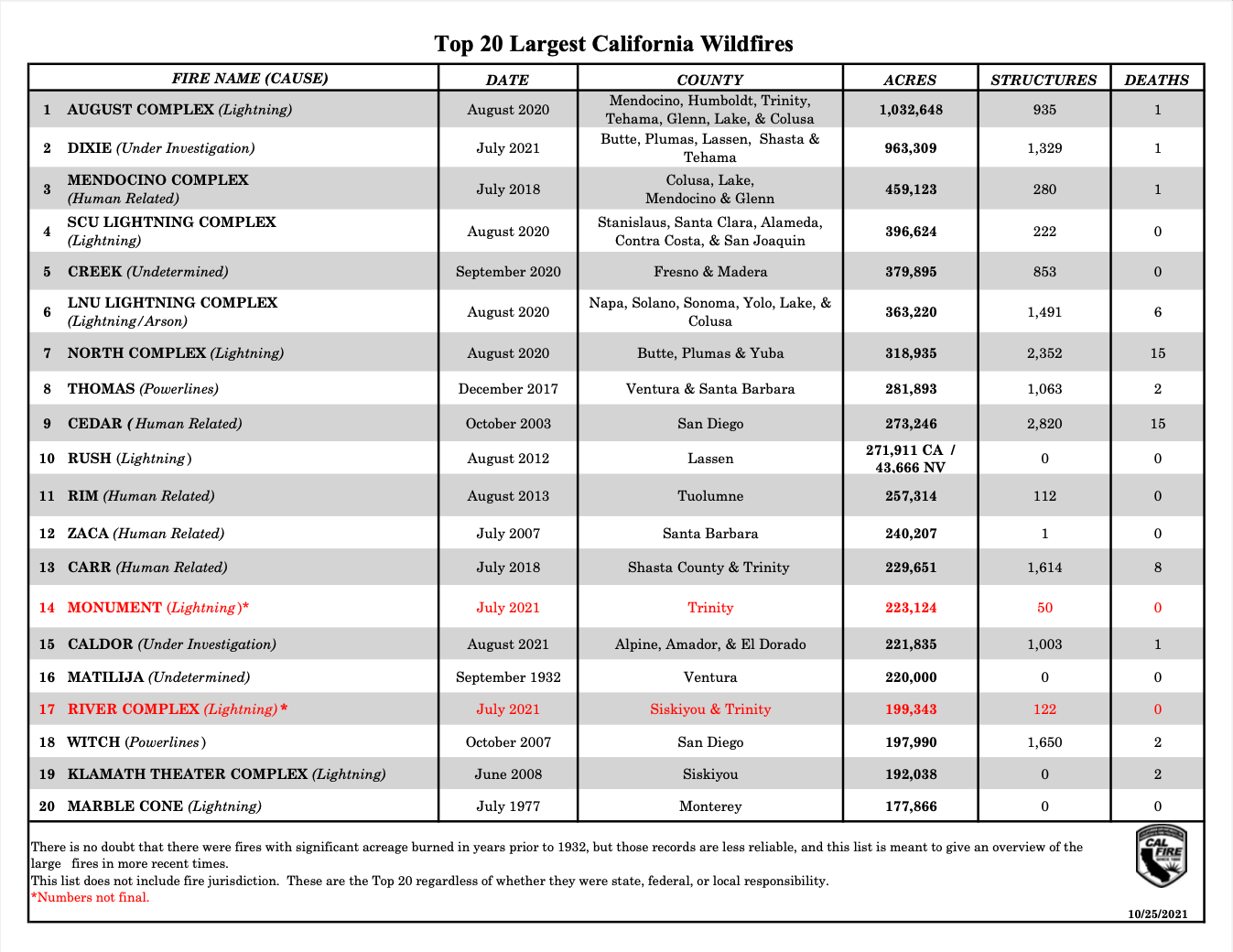2021 Predictions
Coming out of the historic 2020 wildfire season with many of the same troubles and complications extending out to the next year, most predictions were ominous for the 2021 fire season. Subsequently, incident command teams were struggling with complications stemming from Covid, limiting personnel resources and slowing responses. Most of the Western Region remained in a historic drought that only worsened throughout 2021. Additionally, climate change affected weather patterns across the West, extending the fire season and increasing extreme fire weather conditions in more places. All of these patterns carried over into 2021, so what was the result?
Outcome
| Year-to-date statistics | ||
| 2021 (1/1/21-12/21/21) | Fires: 57,465 | Acres: 7,687,881 |
| 2020 (1/1/20-12/23/20) | Fires: 57,480 | Acres: 10,357,138 |
| 2019 (1/1/19-12/23/19) | Fires: 49,492 | Acres: 4,576,827 |
| 2018 (1/1/18-12/23/18) | Fires: 55,911 | Acres: 8,582,609 |
| 2017 (1/1/17-12/23/17) | Fires: 65,127 | Acres: 9,563,128 |
| 2016 (1/1/16-12/23/16) | Fires: 62,946 | Acres: 5,437,875 |
| 2015 (1/1/15-12/23/15) | Fires: 60,984 | Acres: 9,937,863 |
| 2014 (1/1/14-12/23/14) | Fires: 63,252 | Acres: 3,585,569 |
| 2013 (1/1/13-12/23/13) | Fires: 46,373 | Acres: 4,306,944 |
| 2012 (1/1/12-12/23/12) | Fires: 67,326 | Acres: 9,208,193 |
| 10-year average Year-to-Date | ||
| 2012-2021 | Fires: 58,636 | Acres: 7,324,403 |
Source: National Interagency Fire Center (NIFC)
The 2021 wildfire season was slightly below the ten year average for total fires and slightly above the ten year average for acres burned. So overall, it was a fairly average year according to the statistics. The statistics, however, do not tell the whole story.
California
Four new fires made the Top 20 Largest California Wildfires list in 2021. This included the second largest wildfire in California’s history (first if you do not include Complex Fires), the Dixie Fire. The record trend could have continued well into the fall, as it did last year, but Northern California had record breaking rainfall in October that helped reduce wildfire potential for the rest of the season. Notably, the KNP Complex Fires and the Windy Fire threatened, damaged, and killed an estimated 2,200-3,600 of California’s famous Giant Sequoias, just one year after the Castle Fire killed 10-14% of the largest Sequoia trees. Moreover, this is a worrying trend for these historic trees that have survived many fires over hundreds of years.
Colorado and Kansas
California’s trend of a lengthening fire season is also happening across the West. Warm temperatures in late fall and early winter delayed snowfall across the Rockies and the Plains of Colorado and Kansas. In addition to these conditions, there were early wind events that normally start in Spring and continued historic drought. As a result, there was unusual fire activity in November and December. Also, while these fires are unusual historically, they are likely to become much more common in the future.
Planning for the Changing Future
The Bipartisan Infrastructure Bill has been signed into law and includes the requirement for the U.S. Department of Agriculture, the Department of the Interior, and FEMA to establish a new Wildland Fire Mitigation and Management Commission. The commission will be tasked with recommending policies and strategies to better prevent, mitigate, suppress, and manage wildland fires, as well as rehabilitate land affected by wildland fires. Additionally, they will focus on the rural communities across the West, with particular consideration for the effects of climate change.






One Comment